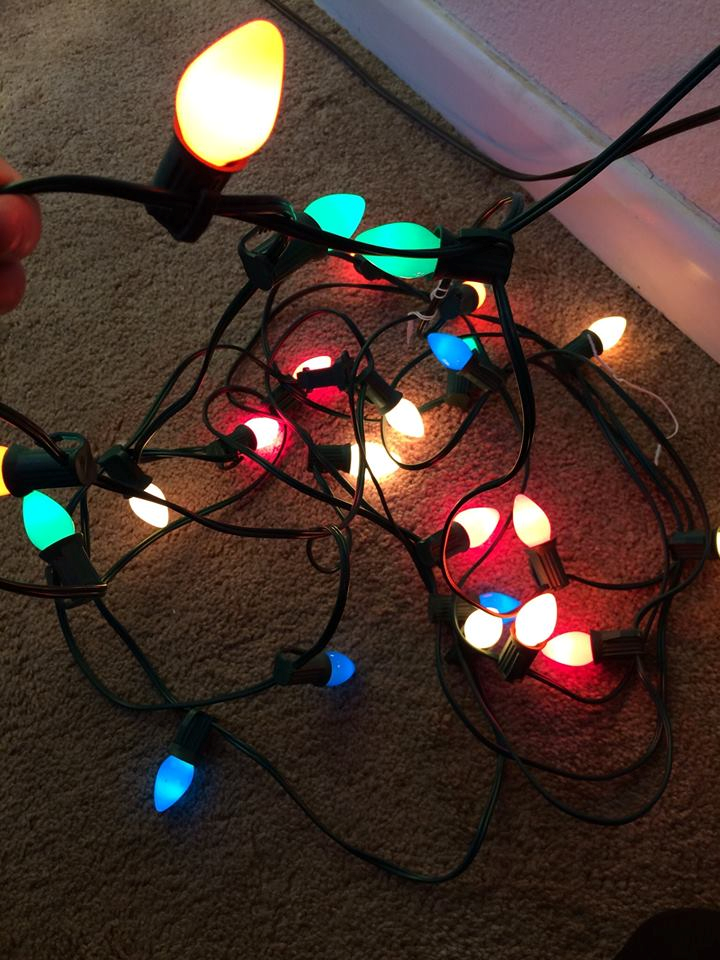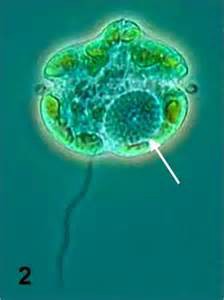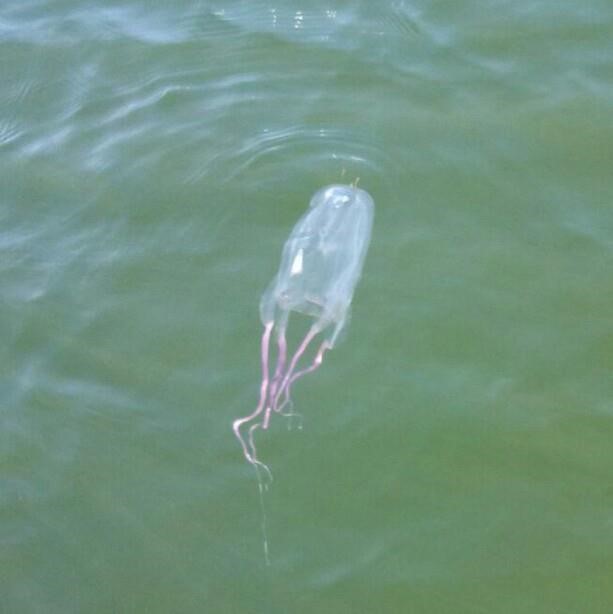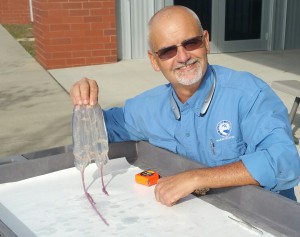
by Rick O'Connor | Dec 21, 2015
Tis the season… the days are shorter, the lines at the stores are longer, and everyone is busy getting ready. This newsletter is about natural resources and nature – so I was thinking about how we could all enjoy the spirit of this holiday for the wildlife and for our own peace of mind. Maybe we could think in terms of the “12 days of Christmas” that could benefit wildlife and ourselves. Give it a try!
1st Day of Christmas: Donate to a Wildlife Sanctuary or a local Pet Shelter
This is a great way to start off. Most wildlife sanctuaries and animal shelters are need of items over the colder months. They are on tight budgets – as we all are – and giving is good for you as well. Providing a bag of pet food to our local animal shelter is another way to help our furry friends and it will make you feel better as well.
2nd Day of Christmas: Take a Walk Outside
This is one of the best times of year to live in the panhandle. The skies are beautiful day and night. The crowds are down and there are a lot of interesting things that walking our beaches and hiking in the woods. It is very calming in this season of busy and rush. Take a day (or evening) and enjoy it.
3rd Day of Christmas: Think About Bottled Water and other Plastic Items
We continue to find a lot of plastic items washed ashore along our beaches and roadsides that are serious problems for many of the organisms that live there. Plastic bottles, bags, and food wrappers (not to mention cigarette butts) are still collected each weekend along our beaches. Maybe this Christmas you can have some way of reducing these problems at your holiday gatherings. A good thing to continue throughout the year!
4th Day of Christmas: Participate in a Bird Count
There is the official Christmas Bird Count that occurs each year (find out more by contacting your local Audubon Society) or do one of your own while you enjoy the back porch. Much of the panhandle wildlife disappears this time of year – birds are one of the few that remain active (if not more active). You’ll be amazed at the variety we have here this time of year.
5th Day of Christmas: Consider Removing Invasive Species
Not everyone has these in their yard but some do. Some species have become a real problem and controlling them is a need. If you have an invasive plant consider removing it. If you need advice on how – contact us here at the Extension Office. Let’s try and keep the serious invasive species at bay.

There is nothing like Christmas lights on a tree.
Photo: Molly O’Connor
6th Day of Christmas: Go Paddle Boarding or Kayaking
It is a bit cold for most of us to enter the water this time of year but the waters are usually pretty calm and very clear. There are a lot of neat things you can see from a paddle boards or kayaks. Don’t have a paddle board or kayak? There are plenty of locations in the panhandle that rent them – it will be worth the time and money to get out outside for a while.
7th Day of Christmas: Think About Packaging
It really is not Christmas without beautifully wrapped presents beneath the tree. But we tend to generate a lot of waste with packaging. Some items are not even used more than the time it takes us to drive home – then they go straight into the trash can. We need color to make the season bright but take some time to think about how you could reduce the packaging issue.
8th Day of Christmas: Go Fishing
Even if you do not fish – or are real bad at catching fish – fishing is a very relaxing way to spend a few hours during the busy holiday. Who knows – You might catch a big surprise! Be aware of monofilament though. This is a big issue for aquatic wildlife also. There are monofilament recycle bins at many locations in the panhandle and boxes from Berkley Fishing Line that will recycle this line into other products.
9th Day of Christmas: Help the Sea Turtles
It is not sea turtle season yet but now is not a bad time to begin thinking about changing your outdoor lights to become more turtle friendly. Most of those living and working on the beach will have to make this change so why wait. If you have questions about how to become turtle friendly you can contact the county extension office.
10th Day of Christmas: Enjoy the Holidays Lights
This time of year we decorate our homes with beautiful Christmas lighting. It was common when I was a kid to take a ride one evening and just admire the lights – do it. It is really a great break from the hectic day. If you want to keep it traditional – hot chocolate when you are done!
11th Day of Christmas: Check for Derelict Crab Traps
This time of year the tides are lower than normal. Between the tide and the north winds – the water levels are low enough to expose derelict crab traps in the water. If you see one of these let us know here at the Extension Office. Removing crab traps from open waters (even if there are derelict) is illegal in Florida. We can get permission from the state to remove those. But we need to know where they are. Derelict traps unfortunately continue to catch crabs and other marine life – a waste of a good resource really – let’s change it.
12th Day of Christmas: Enjoy a Sunset
And finally – end your day with one of the best sunsets you will see all year. We are all lucky to live in a place like this. Celebrating the sunset is a wonderful way to be thankful for it.
Enjoy family, friends, pets, and wildlife this season. Take some time.
Happy Holidays Everyone!

by Rick O'Connor | Dec 21, 2015
This is a question I have been asked several times in the last week. As most of you know the red tide that has been occurring off the panhandle the last few months is still around. Dead fish were reported on Pensacola Beach again the weekend of Dec 12-13 and a few people said they were having eye and throat problems. This weekend I received a call of dead fish inside the bay but the caller was not suffering from eye and throat issues. Its December… what’s going on?

The dinoflagellate Karenia brevis.
Photo: Smithsonian Marine Station-Ft. Pierce FL
Well let’s look again at what red tide is and what facilitates the bloom. Red tide is caused by small microscopic plants called dinoflagellates. Dinoflagellates, like all plants, develop defense against herbivores that may try and feed on them. A few of these dinoflagellates release toxins when disturbed as a defense. They are in the Gulf all of the time but usually in low numbers, maybe 300 cells per liter of water, and cause no problems. But when conditions favor growth and reproduction they do just that – grow and reproduce – in great numbers, maybe 3000 cells per liter. When this happens the water actually darkens with their presence and the amount of toxin they release increases due to the increase number of cells – now marine creatures other than those that feed on them are impacted by the toxin – this is a red tide.
So, what are these conditions?
Well, like all plants dinoflagellates like sunlight, warm temperatures, and nutrients (fertilizers). So you would think that these blooms would occur when most plants grow – summer… and you would be right. There is another condition that contributes and those are currents. If currents are strong it will spread the bloom and the concentrations are spread as well, lowering the concentration per liter of water and thus reducing or diminishing the red tide.
We generally have plenty of sunshine here in the panhandle – temperatures are relatively warm, though they are warmer in south Florida – and there are nutrients. Nutrients are available naturally in the Gulf but are increased when we have a lot of rain as the runoff brings nutrients from land. But remember red tides are not always the result of human pollution – they occur naturally but can be increased or extended with excess nutrients from human runoff. The currents here along the panhandle tend to keep red tides at bay most of the time – we do not see them often here, but that is not the case with southwest Florida. In the Port Charlotte area red tides are more common part of life. It is warmer, there is more agriculture and municipal nutrients entering the Gulf, and the currents there are slower/weaker than we have here.
So what is up in the panhandle this year?
Well the sun is still shining! Feels great out there actually. The water temperatures were in the upper 60’s inside Pensacola Bay this week and that is typical, but the Gulf is still in the 70’s, and that is typical as well. What is not typical is the warmer air temperatures. This will slow the temperature drop of the Gulf and allow plants to extend their non-dormant season. H2O is a polar molecule (has an electric charge) and so the molecules are bonded together like two magnets. Because of this it takes more heat (energy) to warm the water and so area waters warm at a slower rate than the air. If the air temperatures remain warm it will be longer before the Gulf cools down. These warmer temperatures may extend the red tide a bit longer. As far as nutrients, heavy rains in October and November probably supplied more food for the plants and contributed to the beginning of the tide. Currents pushed the red tide inshore where we began to experience the eye problems and fish kills. The north winds from the recent fronts passing through may generate upwellings in the Gulf. Upwellings are currents that bring water from the ocean floor to the surface, this would bring nutrients with it. So we still have sun, warm temperatures, and nutrients – and the bloom is still with us. What will reduce the problem will be wind and currents to drive it offshore… and time – the Gulf will eventually cool and the tide will be reduced. How long is anyone’s guess.
So why is it 70 degrees in December?
That is a question for another article…
You can track red tides in the panhandle by visiting http://myfwc.com/REDTIDESTATUS

by Judy Biss | Dec 4, 2015

To be successful hunters of the night, owls have some truly amazing physiological adaptations. This closeup of a barn owl shows a few in the large eyes and dish shaped face that help perfect its hearing and sight. Compliments UF/IFAS File Photo
Some of my favorite creatures are owls, and as you can see by the quotes below, owls have captivated humans across the ages.
And thorns shall come up in her palaces, nettles and brambles in the fortresses thereof: and it shall be an habitation of dragons, and a court for owls.
Isaiah 34:13
“Owl,” said Rabbit shortly, “you and I have brains. The others have fluff. If there is any thinking to be done in this Forest–and when I say thinking I mean thinking–you and I must do it.”
― A.A. Milne, The House at Pooh Corner
“I think I’m a tiny bit like Harry ‘cos I’d like to have an owl. Yeah, that’s the tiny bit, actually.”
― Daniel Radcliffe (Actor who portrays Harry Potter)
According to the Florida Audubon Society, Florida is the year-round home to six (6) species of owls and four (4*) occasional visitors such as the striking Snowy Owl. These owls are listed in the Audubon of Florida Checklist of Florida Birds and are the:
Barn Owl
Barred Owl
Burrowing Owl
Eastern Screech-Owl
Great Horned Owl
Short-eared Owl
(*exceedingly rare)
Flammulated Owl *
Long-eared Owl *
Northern Saw-whet Owl *
Snowy Owl *
Each of the species links above will take you to the Cornell University CornellLab of Ornithology providing information about these owls including an audio clip of their unique calls. It’s an informative site, so be sure to click on your favorite owl for more information and to listen to their calls.
Owls are mainly nocturnal hunters, which means they are most actively feeding at night. Depending on the species, their diet is quite varied and includes, insects, lizards, a variety of small rodents, birds, and even crayfish. Nesting pairs of owls and their voracious owlets can consume thousands of small rodents in a year. Because they eat a variety of prey and are significant rodent predators, owls are welcome residents on most farms and homesteads.
To be successful hunters of the night, owls have some truly amazing physiological adaptations, such as the ability to rotate their heads 270 degrees, ears that are offset on the sides of their head in order to pinpoint location of prey, the ability to control feathers on their dish shaped face to direct sounds into their ears, and comb like structures on their feathers to silence them in flight. The following details about these and other adaptations are taken from the Cornell University CornellLab of Ornithology – the Owl Page, and Blogs at Cornell University-Anatomy of Owls.
Sight
Owls’ large forward facing eyes give them the best stereoscopic vision of all birds, which is vital for judging distances. The shape of their eyes, their unusually high number of light-sensitive cells, their large pupils, and a reflective layer behind the retina (called the “tapetum lucidum”) give them excellent nocturnal vision useful when hunting at night or navigating dark forests. The shape of their eyes limits their ability to move them in the eye sockets, but their necks can turn up to 270 degrees.
Hearing
Their ability to locate prey by sound alone is the most accurate of any animal that has ever been tested. These owls can catch mice in complete darkness in the lab, or prey hidden by vegetation or snow out in the real world. Their ears are placed unevenly on their head and point in slightly different directions, giving the ability to hear where a sound is coming from without moving their heads. Owls can also funnel sound toward their ears by manipulating different types of feathers around the ears and face.
Silent Flight
On both the primary and secondary feathers, there are comb-like structures at the edge of the feather that are responsible for muffling the sound of the air going over the wing – this essentially makes an owl silent when they fly. Also, an owl’s feathers can separate from each other on the same wing; therefore, the air flows over each of the individual feathers and their comb-like structures, which maximizes how silently an owl flies.

BELLE GLADE—University of Florida graduate researcher Cosandra Hochreiter checks on a barn owl nesting site on the grounds of UF’s Everglades Research and Education Center. The five owlets in this corner were among several babies and their parents nesting in this abandoned barn at the research center. Researchers are trying to boost the population of barn owls in the Everglades Agricultural Area because they are a natural form of rodent control. Rodents can cause up to $30 million damage per year to sugar cane and vegetable crops, and a nesting pair of barn owls can eat almost 3,000 rodents over the course of a year. Compliments UF/IFAS File Photo
Owl Pellets
Owls swallow their prey whole or in large pieces, but they cannot digest fur, teeth, bones, or feathers. Like other birds, owls have two chambers in their stomachs. In the first chamber, all the digestible parts of an owl’s meal are liquefied. Then the meal passes into the second chamber, the muscular stomach or gizzard, which grinds down hard structures and squeezes the digestible food into the intestines. The remaining, indigestible fur, bones, and teeth are compacted into a pellet which the owl spits out. Owls typically cast one pellet per day, often from the same roosting spot, so you may find large numbers of owl pellets on the ground in a single place.
Nesting
Owls will typically nest in cavities of mature trees, or will use the nests of other birds or even squirrels. Burrowing Owls nest in the ground, and although it can dig its own burrow, it often uses holes already created by skunks, armadillos, or tortoises. Some owls will use artificial nest boxes, and building plans for the Great horned, Barred, and Barn owls are found here at this website: Cornell University CornellLab of Ornithology – the Owl Page
So, the next time you are enchanted by the familiar sound of our common Barred Owl, or if you happen to find a few owl pellets below a tree, think also of the many amazing attributes of Florida’s owls, our stealthy nocturnal predator.
For more information on this topic please see the following resources used for this article:
Barn Owl (Tyto alba)
Barred Owl (Strix varia)
Helping Cavity-nesters in Florida
Cornell University CornellLab of Ornithology – the Owl Page
Florida Audubon Society
North American Owls: Biology and Natural History

by Rick O'Connor | Dec 4, 2015
Yep, but do not get to alarmed just yet… it is not the same species as the famous one from Australia. That said… who is this new invader to our waters and is it of concern?

This Four-handed box jelly was found near NAS Pensacola in 2015.
Photo: Courtesy of Robert Turpin
According to NOAA and the University of California at Berkeley there are between 20-50 species of box jellies from around the world. Their distinct shape, often called “cubomedua”, places them in their own family. Most of the “medusa” jellyfish we know are in a group called “scyphozoans” but box jellies differ in several ways.
- Their shape – the “box” shaped and their tentacles are clustered into four groups on the corners of the “box”.
- They are very good swimmers – most medusa can undulate their “bells” and move but they are planktonic (drifters) in the ocean currents. Box jellies are very strong swimmers. They can move against currents, tend to swim below the surface more (often collected in shrimp trawls), and have been clocked at top speeds of 4 knots! (This is very fast for a jellyfish).
- They do have eyes. They know where they want to go, can avoid colliding with piers, and have been known to even swim away from collectors trying to catch them. Not typical of our locals jellyfish. Lacking a central nervous system like ours, science is not sure how they see, or what they see, but they do.
Box jellies are found in all tropical seas, including the south Atlantic and Gulf of Mexico. They range in size from less than an inch to about 8 inches, with tentacles extending as far as 10 feet behind. Breeding in this group is interesting. Males will place their tentacles inside the bell of the female and deposit sperm. The female will then fertilize her eggs and release planktonic larva called planula. These planula will drift in the currents for a short period before metamorphosing into a flower-like creature called a polyp. Polyps are sessile (non-swimming) and attach to hard structures on the ocean floor. Here they can move and adjust to feed with their extended tentacles and can actually produce more polyps by budding. After a period of time each polyp will metamorphose into a swimming medusa, the box jelly we know and love. As already mentioned, they swim with purpose hunting small fish and invertebrates. They do have their predators. Certain fish and sea turtles are known to consume with no ill effects.
They all possess a very strong toxin which is quite painful. The most toxic of the group is Chironex fleckeri, the famous one from Australia. This jellyfish has been listed by many, including NOAA, as the most venomous marine animal in our oceans. It has certainly caused death in their waters. The majority of the lethal box jellies live in the Indo-Pacific. So what about Florida?
I am aware of two species that have been found here. The “Four-handed Box Jelly” (Chiropsalmus quadrumanus) and the “Mangrove Box Jelly” (Tripedalia cystophora). The Four-handed box jelly is the larger of the two, and the one pictured here. The Mangrove Box Jelly typically lives in the Caribbean. The first reported in south Florida was in 2009 near Boca Raton but they have since been reported in the Keys and along the Southwest coast of Florida. This is a small box jelly (about 0.25” in diameter) and seems to prefer the prop roots of mangrove trees.
The Four-handed box jelly can reach almost 5” in length with up to 10’ of tentacles attached. It is more widespread in Florida, though more common on the Atlantic coast then our own. One was brought to me about 6 years ago. The person found it next to pier at Quietwater Boardwalk, in the evening, swimming around the lights shining in the water, it was near Thanksgiving also. The one pictured here was seen by a local surfer and by Robert Turpin (Escambia County Division of Marine Resources) last week. Both sightings were near NAS Pensacola and may have been the same animal. This box jelly has the same characteristics as others – box shape, clustered tentacles, and very painful sting. The surfer who brought me the one from 6 years ago was stung by it. He said the pain brought him to his knees… so do not handle this animal if you see one. There was a report of a small child who died after being stung by one in 1991. However there are reports of young kids dying from the Portuguese man-of-war as well. Lesson here… treat it with caution.
These box jellyfish are not the deadly ones known from Australia, and it is certainly not common here – preferring to stay in the open ocean more than nearshore, but it is an animal all should know about and avoid handling if encountered.
More resources on this animal:
http://www.sanibelseaschool.org/experience-blog/2014/9/24/5-types-of-jellies-in-the-gulf-of-mexico
http://beachhunter.net/thingstoknow/jellyfish/
http://www.ucmp.berkeley.edu/cnidaria/cubozoalh.html#Active








